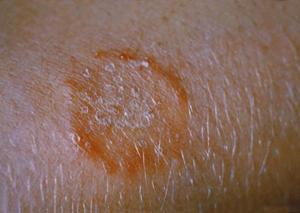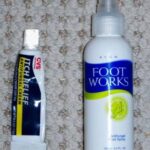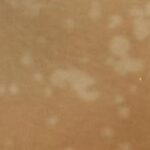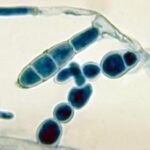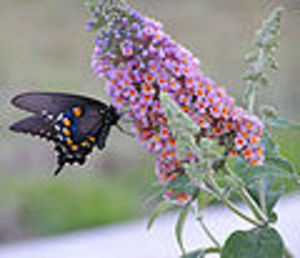Ringworm is a skin condition that is far more common than many understand. Luckily, because of its common occurrence, ringworm can be quite easy to identify and treat if one knows what to look for.
The condition’s name, “Ringworm”, is quite misleading. The tell-tale rings of red or flaking patches of skin are actually not caused by a worm at all. Ringworm, formally known as Tinea, is actually caused by a microscopic skin fungus that is related very closely to the fungi that cause athlete’s foot and jock itch. These fungi feed off of skin cells and as they multiply and move on to new skin they produce an itchy and sometimes painful series of rings on the skin.
Identifying ringworm can be quite easy. When looking closely at ringworms, you will notice that the affected area will have a circular or oblong shape. The innermost section of the skin infection will have normal color and texture while the outer “ring” will appear to be red, dry or flakey. The irritated outer edge may appear as a thin line of peeling dead skin, or may look like a thick band of red rash.
The cause of the uniquely round shape of a ringworm infection is the way that the ringworm fungus grows. It begins in a tiny centralized point on the skin, and as the fungus feeds on skin cells it moves outwards towards new territory. The origination point eventually heals itself, and the fungi continue on their outward direction leaving a normal patch of skin in the center of a ring of irritated skin.
As with both jock itch and athlete’s foot, ringworm is contagious. The ringworm infection can be spread through both person to person and person to animal contact. It is most commonly contracted through the sharing of personal items (combs, clothing, etc.) or through direct skin to skin contact (i.e. petting a dog or cat). Fortunately, once ringworms receive treatment and the rash begins to fade they are no longer contagious.
Once you have identified ringworm, begin treating with an over-the-counter antifungal cream. Although there are ringworm-specific ointments, athlete’s foot and jock-itch creams and sprays are also effective at treating ringworm as they are all a member of the same fungi family. With treatment ringworm will fade and clear up within two to four weeks. However, if after administering treatment for two weeks, there is no relief from symptoms or symptoms appear to be worsening you should notify your doctor as the infection may need more aggressive care.
To prevent yourself and others from contracting ringworm, follow the same steps that you would to avoid jock itch and athlete’s foot skin infections. Thorough washing and drying of the skin, nails and scalp are essential for preventing skin infections. Avoid sharing personal items with others and always wear shower shoes and use your own towel when using public showers. Change promptly out of damp or dirty clothing and do not re-wear clothing items until they have been thoroughly washed and dried.
Contact your doctor if you are unsure if your skin infection or rash is ringworm, or if you appear to have numerous skin infections on multiple parts of the body. If proper treatment for skin infection is not received they may worsen and spread, causing great discomfort.
More information on ringworm and other fungal infections can be found at any healthcare website. Two that are easy to use are www.medicinenet.com and www.webmd.com, although additional information can also be found through your medical insurance carrier site or local health department.
